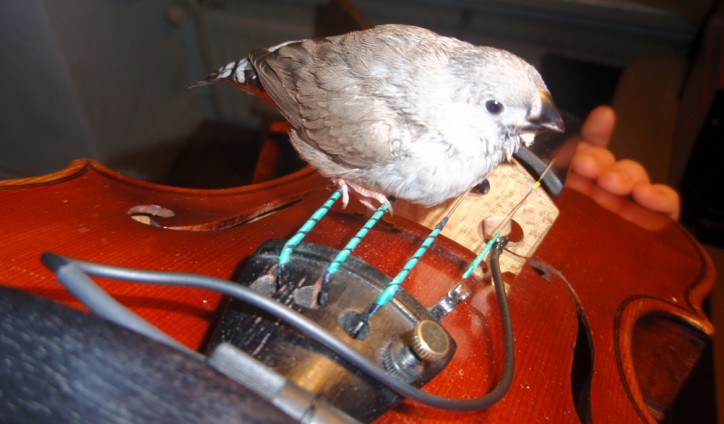
Do birds tango?
Do birds tango? Biological origins of rhythm as a carrier of emotions
Research group at the Cluster of Excellence Languages of Emotion at Free University Berlin
Constance Scharff – scientific-artistic direction
Julian Klein – artistic-scientific direction
Anjelik Capar, Chuiwan Cheung, Cynthia Gotzel, Anna Hohmann, Henrike Hultsch, Alexander Schoof, Robert Ullrich, Mareike Vennen – scientific-artistic collaboration
Alexandra Deutschmann, Fernanda Farah, Kristina Lösche-Löwensen, Susanne Paul, Mariel Jana Supka, Hollis Taylor, Peter Votava – artistic-scientific collaboration
Analysis of rhythm in song and dance of birds in different affective contexts using perspectives from linguistics, musicology and movement studies: do affective sequential motor behaviors share structural determinants?
Rhythm carries important affective information in human speech, music, gestures and dance.. Whether this is true for non-human vocal communication is unknown. Using affective animal behaviors, e.g. courtship and agonistic interactions, as a proxy for ‘animal emotion’ this project aims to first compare linguistic and musicological categories of rhythm in courtship and territorial songs of birds. We will then expand this analysis to bird courtship gestures and dances. We hypothesise that affective rhythmic manifestations in humans and non-human animals are constrained by overlapping biological mechanisms at the proximate level, i.e. of how sounds and body movements are produced and perceived. We argue that these biological constraints influence the rules of how learned vocalizations are sequentially patterned by the sender and decoded by the receiver. Given the important effects that rhythm in its different manifestations has on human emotion, we suspect that rhythm carries affective content also in animal communication.
To investigate this, we will analyze (1) whether songs of zebra finches, nightingales and butcher birds bear species-specific characteristics in terms of prosodic categories, like metre and rhythm (e.g. accentual and syllabic metres, additive, cumulative, countercumulative, endlengthening etc) and their musical correspondences and (2) whether these parameters differ in courtship, territorial and non-communicative songs in these three species. This will contribute to our understanding of the evolution of affective communication.
